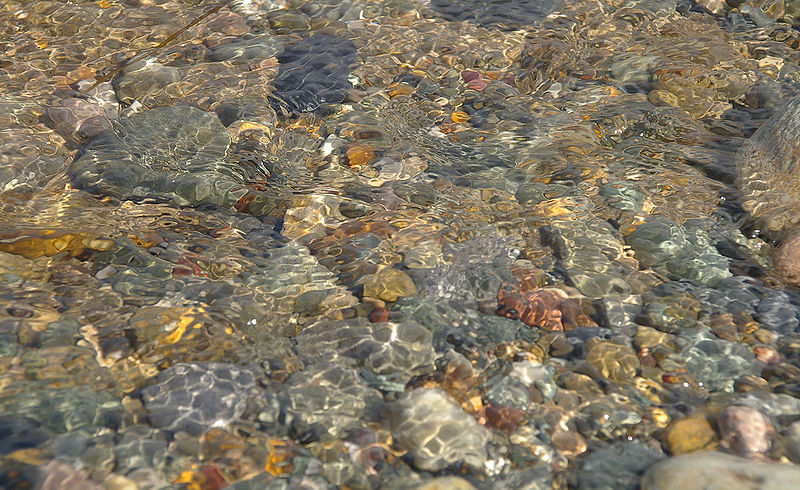7 December 2011
Growing with the flow: Stream currents shape microbial communities
Posted by kramsayer

Water currents sculpt the microbial communities coating streambeds. (Credit: mattbuck/Wikimedia Commons)
To avoid getting flushed down streams, microbes form clingy communities called biofilms along aquatic thoroughfares. The resulting slippery sheets lining the streambed are in charge of many stream’s ecosystem processes.
New data suggests how the microbes actually stick to and grow along channels – they let the water current shape them. Tom Battin, of the University of Vienna in Austria, presented the results at the American Geophysical Union Fall Meeting on Monday.
Battin and colleagues set up a mock stream with sterile surfaces. They angled one surface, called the “crest,” to simulate the side of the stream. They made the other side – dubbed the “trough” – lay flat to act like the bottom of the streambed.
Under controlled conditions, they let water flow down the crest and into the trough, like a gentle waterfall. Then they added in bacteria and watched the microbes set up biofilms.
After 13 days, Battin and his colleagues found that the bacteria sticking onto the crest formed structures parallel to the water flow—strips of sticky sheets that reached down to the trough.
But at the bottom of the waterfall, where the current jostled as it hit the mock streambed, the bacteria formed star-shaped biofilms.
The dynamics of the water determined the biofilm shape, Battin says – the biofilm wasn’t formed based on the bacteria’s function or needs.
To know if the bacteria had any preference for the shape they took, the team measured the biofilm coverage of both the crest and trough. They found that the coverage and number of biofilm clusters, whether streaks or stars, were comparable between the sloping and flat surfaces.
Although the bacteria grew with the water flow, Battin thinks that the different biofilm formations may have different functions and may use water resources differently. He also expects that the water dynamics dictate biofilm formation regardless of whether the biofilm is growing on a simulated slide or on tiny pebbles in a real stream.
“Ultimately,” Battin says, “it’s just a matter of scale.”
-Beth Marie Mole is a science communication graduate student at UC Santa Cruz










 GeoSpace is a blog on Earth and space science, managed by AGU’s Public Information staff. The blog features posts by AGU writers and guest contributors on all sorts of relevant science topics, but with a focus on new research and geo and space sciences-related stories that are currently in the news.
GeoSpace is a blog on Earth and space science, managed by AGU’s Public Information staff. The blog features posts by AGU writers and guest contributors on all sorts of relevant science topics, but with a focus on new research and geo and space sciences-related stories that are currently in the news.